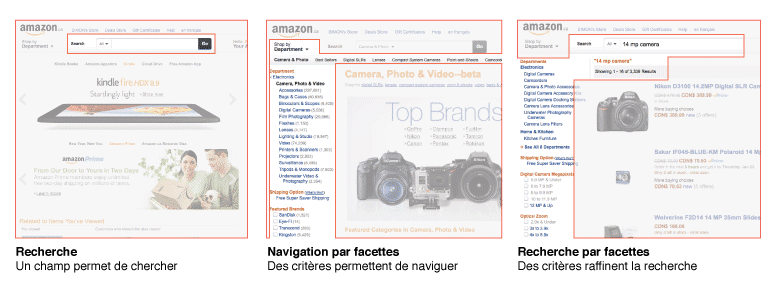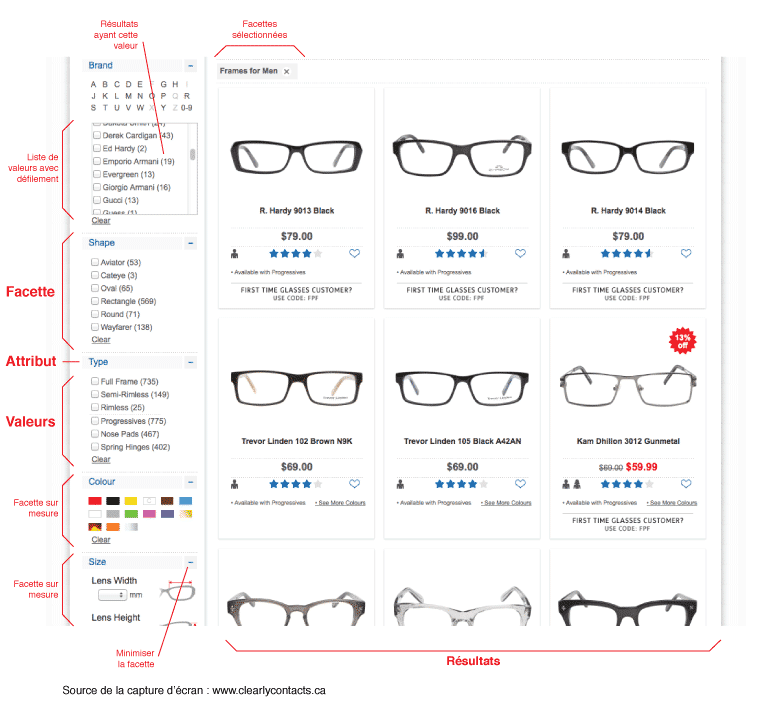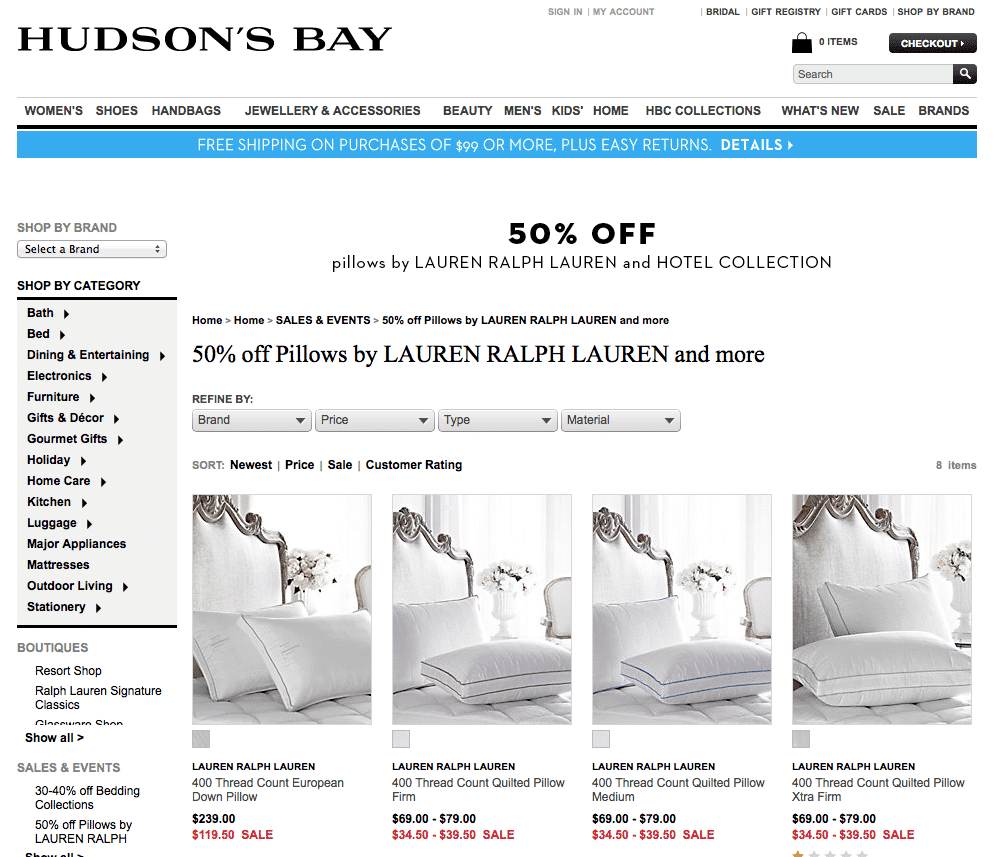Executive IT Advisor and Privacy Officer
Getting to Know Faceted Search to Better Manage an Online Catalog
Executive IT Advisor and Privacy Officer
E-commerce catalog management is an activity that generates results, risk, and which is probably the most underestimated discipline when a company decides to do e-commerce.
However, the catalog is at the heart of online shopping , and has repercussions on the customer experience, SEO on search engines, performance measurement and Web marketing in general. For those exploring the needs of customers, campaigns, and other sites, there are several ways to maximize the impact of catalogs.
How to stimulate both research and discovery ? This article, the first in a series on catalog management, introduces you to the tool that has seemed almost essential for several years, faceted search...
WHAT IS FACETED SEARCH?
In user experience, faceted search is a design pattern that intersects two concepts, namely site search ( site search ) and faceted navigation , which is a form of navigation where the user can filter content (products , etc.) according to different criteria, which usually add up to offer results that are more and more appropriate to the user's criteria (which are the facets).

BROWSERS VS SEARCHERS
Web audiences are often divided into two typical behaviors when talking about browsing: those who search, and those who browse. However, these are not two different types of humans, and depending on the search context, faceted search reconciles these two alternative behaviors in the same interface.
In addition, we must not forget that the searches of Internet users are more and more precise ... which sometimes requires several ways of refining the results, sometimes in a structured way (a price range, a rating, a brand), sometimes less (a keyword): searching alone (or browsing alone) would rarely meet these requirements , especially for a large catalog. Even Google ended up adding facets to its all-powerful search engine…
ANATOMY OF FACETED SEARCH

BUT AN ADVANCED SEARCH WOULD DO THE TRICK, RIGHT?
Many will say that we would have arrived at the same result by an advanced multi-criteria search form. From the designer's point of view, this is not wrong.
On the other hand, the user usually does not know what to expect and risks more disappointments with the advanced search, for example the following (all of which I have seen in user tests):
- “I filtered everything through an ultra-precise search (so put in the effort), and got no results, I have to go back and start over”
- “I was looking for products and I was shown a form, I thought I was in the wrong section”
- “I'd love to see everything you offer, but I'm being forced to be specific”
- “I am asked to choose, but I don't know which is more popular / frequent / better between the options offered”
- "I'll recognize it when I see it, but I can't find it in the nomenclature"
In the end, the advanced search would have done the trick on a strictly functional level… but was less satisfying.
TOO MANY CHOICES… IS IT REALLY LIKE NOT ENOUGH ?
In general, having too many choices while still being able to filter products puts the user in control to follow the scent information , gradually progressing from small satisfaction to small satisfaction… and refining the results just enough , but not too much.
While not perfect, faceted search breaks down the refinement task into more digestible steps, while showing progress, as recommended by ergonomic best practices.
Especially since we have known for more than 10 years that the feeling of progressing in the navigation is probably more important than the number of clicks to be satisfied with your visit .
DEMONSTRATE THE VASTNESS OF THE OFFER
For the advertiser, the search by facets also makes it possible to put the customer in contact with a maximum of products likely to please him according to his criteria . In short, to discover products or characteristics in which he would not have been interested otherwise.
This is why faceted search is usually more desirable than advanced search, especially in a persuasive context like e-commerce.
INTEREST IN CAMPAIGNS AND SEO
In many cases (check with your technology provider!), the results pages of a faceted search can be optimized to serve as a landing page for online advertising campaigns. Knowing that a well-crafted landing page can increase campaign performance (via mechanisms such as quality score ), this avenue is essential to a self-respecting e-commerce strategy.

Hudson's Bay uses its faceted search to generate a list of products matching each promotion
If they are indexable (and possibly optimized for this), these pages can also be used for organic referencing.
A visitor can also share the results pages to point to a specific list of products by including a link on his site, by email or in social media.
What's more, if there are still facets to choose from, the user will be able to refine his choice on the landing page.
DIFFERENT MODELS
Typically, the search by facets is built either in a subtractive way, or in an additive way, or by combining the two previous methods, which gives interfaces with different possibilities:
- Subtractive model (choosing a single value for an attribute eliminates all products that do not match that value; often the easiest structure to develop)
- Additive model (it is possible to choose several possible values for the same attribute in “or” mode, generally with the use of a checkbox)
- Hybrid model (some facets are subtractive, others additive; obviously the most complicated structure to develop, as in the Ebay example below)
-png.png)
DIFFERENT TOOLS
Several faceted search tools exist on the market (not counting those of customer experience management (CXM) systems such as Oracle Commerce and Adobe Experience Manager), including:
THE ENEMY?
As I said in the title, faceted search can be the enemy of an e-commerce site if misused:
- How will the customer enter this tool?
- What facets should be documented to invest without exaggerating ?
- How will we ensure that the products with greater added value (both for the merchant and the customer) will be displayed first ?
- What to do when the same product exists in several variants which have different characteristics?
For the more motivated , you will find more details in Faceted Search by Daniel Tunkelang of LinkedIn, a reference in online information research/discovery (ex-Google and ex-Endeca, a search/browsing tools company by benchmark facets/searchandising which was acquired by Oracle and integrated into Oracle Commerce, their e-commerce platform).








